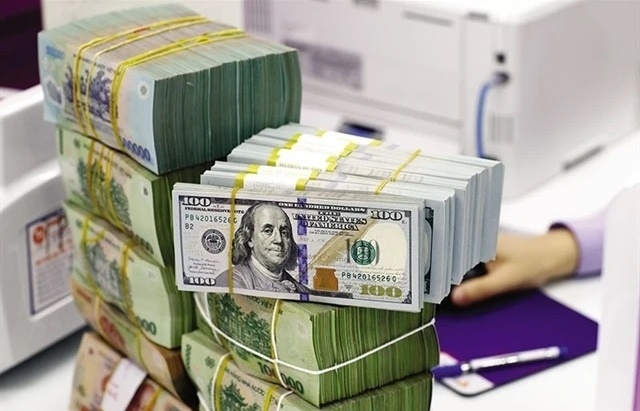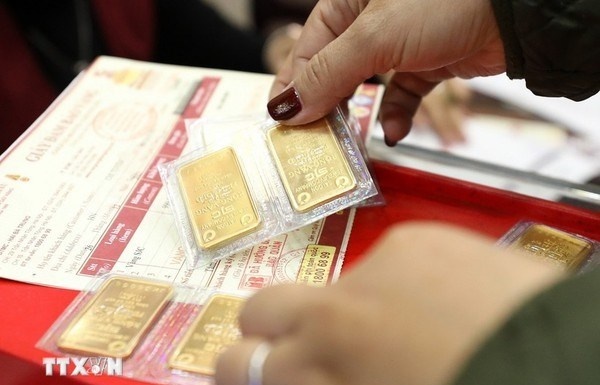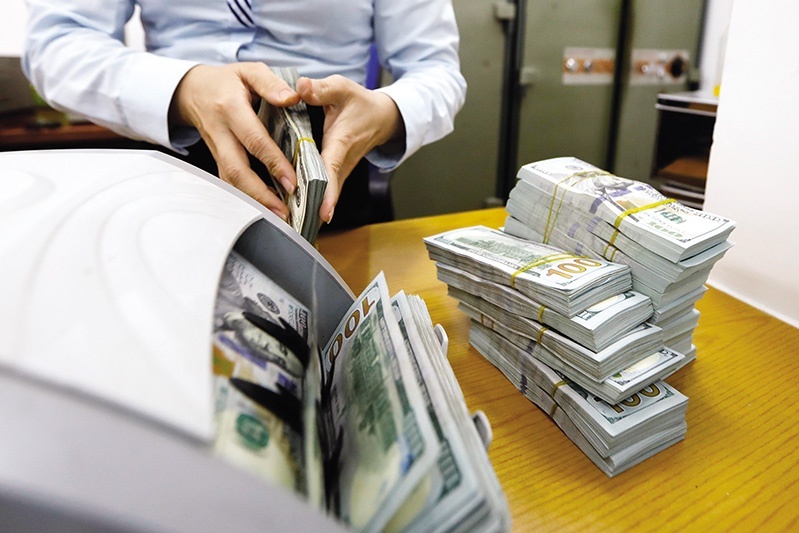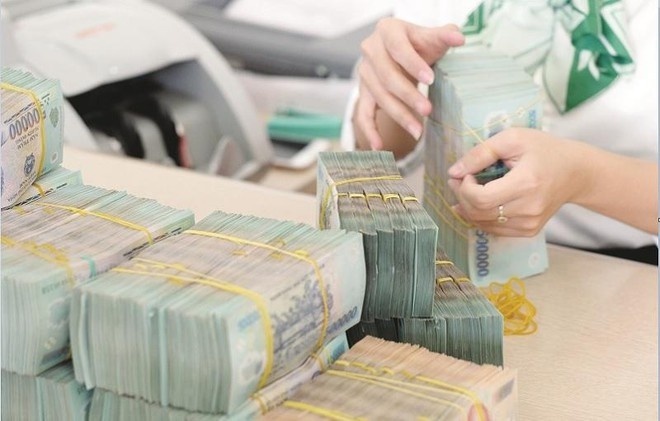Bank reforms get green light
The government has given the go-ahead to the central bank to spend $112 million on the second stage of reform for Vietnam’s four State-owned commercial banks (SOCBs), a source from the central bank said last week.
Vietnam’s banking system is striving to meet international standards |
The second stage, running from 2005 to 2008, will bring payment systems and methods up to scratch, thereby reducing operational costs and hopefully pulling in more business to the banking sector as a whole.
The beneficiaries will be the Industrial and Commercial Bank of Vietnam (Incombank), the Vietnam Bank for Agriculture and Rural Development (Agribank), the Bank for Investment and Development (BIDV) and the Bank for Foreign Trade of Vietnam (Vietcombank).
The project is intended to make the banks much more competitive at a time when Vietnam is “on the threshold of regional and even global integration”, according to the central bank officials.
“SOCBs will implement their restructuring plans aimed at transforming them into more commercially oriented institutions, including improvements to credit policies and procedures, accounting practices, information systems, products and services, and capital,” said a central bank official.
He added the SOCB restructuring plans should be updated with specific benchmarks to improve the restructuring of operations and management. Also, the recapitalisation programme for the banks should be tightly linked to these benchmarks.
In 2001, Vietnam began a comprehensive multi-year banking and finance reform programme aimed at strengthening the institutional financial sector, enhancing financial sector transparency and accountability; improving the financial health of the banking system, and creating incentives for banks to operate on a more commercially oriented basis.
Overall progress on implementing the programme has been mixed and Vietnam still has a long road ahead to reach international standards so as to meet the coming challenges of financial sector liberalisation under the US-Vietnam Bilateral Trade Agreement and the forthcoming World Trade Organisation (WTO) accession.
This prompted the State Bank to issue a strategic plan recently for the reform of the institution to meet international standards in preparation for WTO accession.
The bank has also issued a number of decisions to reorganise bank supervision, to gradually level the playing field for foreign banks, and to reclassify all non-performing loans in the four SOCBs.
In May this year, the government decided to disburse the last tranche of its recapitalisation fund from the first phase of reform programme to the country’s SOCBs despite none of them cleaning up their books as agreed under the banking reform agreement.
The Ministry of Finance later on distributed $96 million to Vietcombank, Agribank and Incombank. The first two tranches from the first stage saw a total $529 million injected into SOCBs during 2002-03.
To receive funds under the recapitalisation scheme, SOCBs must have a bad debt ratio of less than 5 per cent – a feat no bank has achieved, according to Pham Phan Dung, the head of the finance ministry’s Finance and Banking Department.
State Bank development and strategy department head Le Xuan Nghia said the increase of chartered capital for SOCBs was aimed at increasing the banks’ ratio of chartered to total assets, to be compliant with the international safety standard of 8 per cent.
“If the chartered capital of SOCBs increases, to start with their ratio of profit to capital will reduce, but in the long run, their capital mobilisation rate will be allowed to increase – although still within a safe limit,” he said.
Under the safety rules of the International Monetary Fund (IMF), commercial banks are allowed to mobilise between 12 and 15 per cent of their chartered capital.
The central bank estimated the ratio of chartered capital to total assets reached about 5 per cent after the allocation, much lower than the IMF’s minimum capital required ratio of 8 per cent.
Nghia said the low ratio had not only reduced the SOCBs’ competitiveness, but also limited their ability to participate in global financial and monetary markets as well as mobilise capital from such markets.
What the stars mean:
★ Poor ★ ★ Promising ★★★ Good ★★★★ Very good ★★★★★ Exceptional
Related Contents
Latest News
More News
- The promotion of ESG via banking (November 21, 2024 | 09:32)
- Standard Chartered committed to Vietnam’s financial success (November 21, 2024 | 09:24)
- Full ESG adoption the priority for Agribank (November 21, 2024 | 09:07)
- Banks entice youth with tech advances (November 21, 2024 | 08:00)
- Banks shaping the future as business advisors (November 20, 2024 | 21:00)
- ESG represents a shift towards sustainability for banks (November 20, 2024 | 13:00)
- GGGI supports Vietcombank’s debut of $80 million green bonds (November 20, 2024 | 11:20)
- SHB and the ESG journey: creating social value in every step (November 19, 2024 | 15:00)
- Banking sector contributes to ESG, green growth, and sustainable development (November 19, 2024 | 14:42)
- ESG implementation in banking: from awareness to action (November 19, 2024 | 12:08)




 Tag:
Tag:





















 Mobile Version
Mobile Version